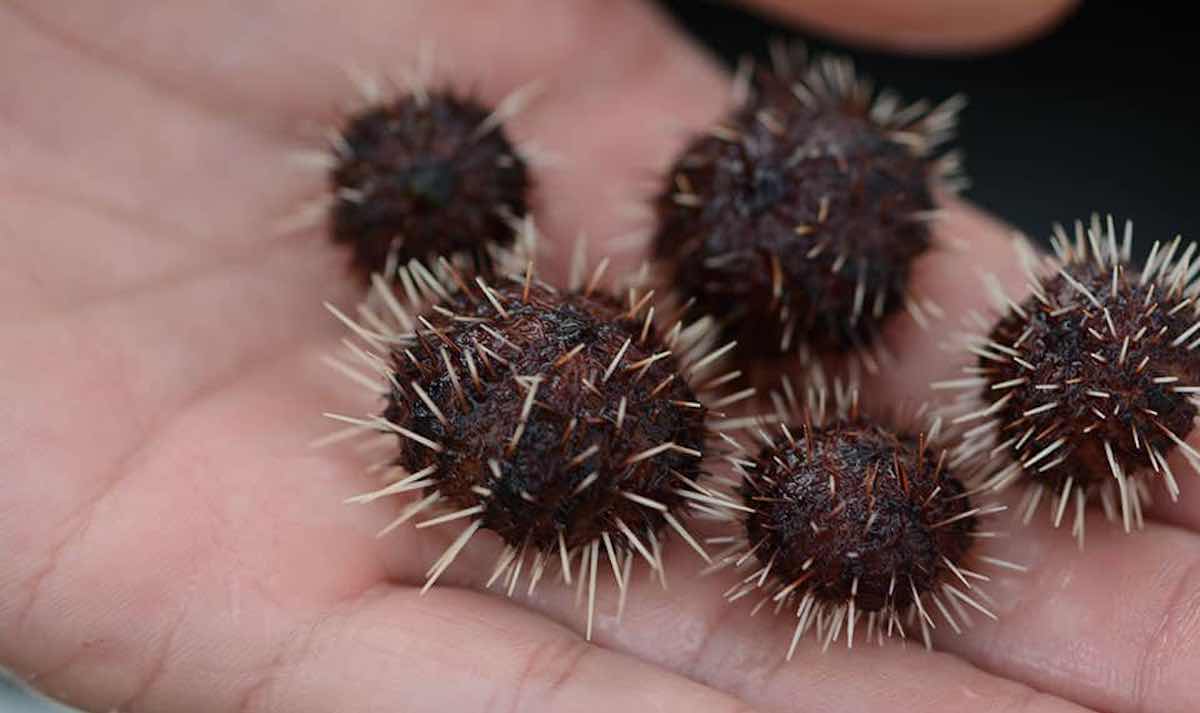Back in the 1970s, a curious scientist introduced a non-native algae species into the delicate ecosystem of Hawaii’s Kāne’ohe Bay. He thought the algae would be good to boost the productivity of aquaculture businesses in the area – but the algae proved to be far too productive, and the rampant blooms soon spread far beyond the purposed area, smothering the beautiful coral beds at the bottom of the bay for the last 50 years.
For years, organized teams of divers would swim down to occasionally cut up the invasive algae to free the coral reefs from the choking undersea plant, but the process was slow, tiring, and expensive. Now, however, a team of researchers have found a way to step back and let nature take care of things herself.
Scientists at the Hawaii Department of Land and Natural Resources have enlisted help from little black sea urchins to roll back the green curtain.
They have begun lining the bottom of the algae-cloaked bay with colonies of native urchins; “underwater grazers” that can eat up the algae far faster than humans can cut it away.
LOOK: After Planting a Tree Every Day for 40 Years, Man Has Created Blossoming Forest on Barren Wasteland
At first the quarter-grown, spiky young fellows couldn’t make any headway, so divers employed a super vacuum to suck most of the large suspended blooms up onto their ship.
The removal of the big fronds gave the urchins just the opportunity they needed, and after placing 100,000 of the urchins on the reefs over the course of the last two years, the invasive algae mats were reduced by 85%.
RELATED: World’s Second Largest Coral Reef Has Just Been Removed From Endangered List
“With manual removal, you’re spending a lot of time and human hours and effort to take algae off the reef, and there’s no guarantee it won’t come right back,” Kostantinos Stamoulis, a biologist at the University of Hawaii, Mānoa, told National Geographic. “And in many cases that’s exactly what happens. With biocontrol, you’re letting nature itself take care of the problem.”
With the urchins of Kāne’ohe Bay proving to be such a success in the field of algae munching, the team is looking out for other reefs and other opportunities to utilize them across the rest of Hawaii.
“The great lesson, from this whole natural experiment,” another research told Nat Geo, “[is] let’s think twice before we bring things from outside.”
If This Story Floats Your Boat, Then Be Sure To Share It With Your Friends – Photo by NOAA
Andy Corbley is the founder and editor of World At Large, a small environment, travel, and lifestyle focused journal that stresses integrity, nuance, and honesty which launched in early March 2019.




















